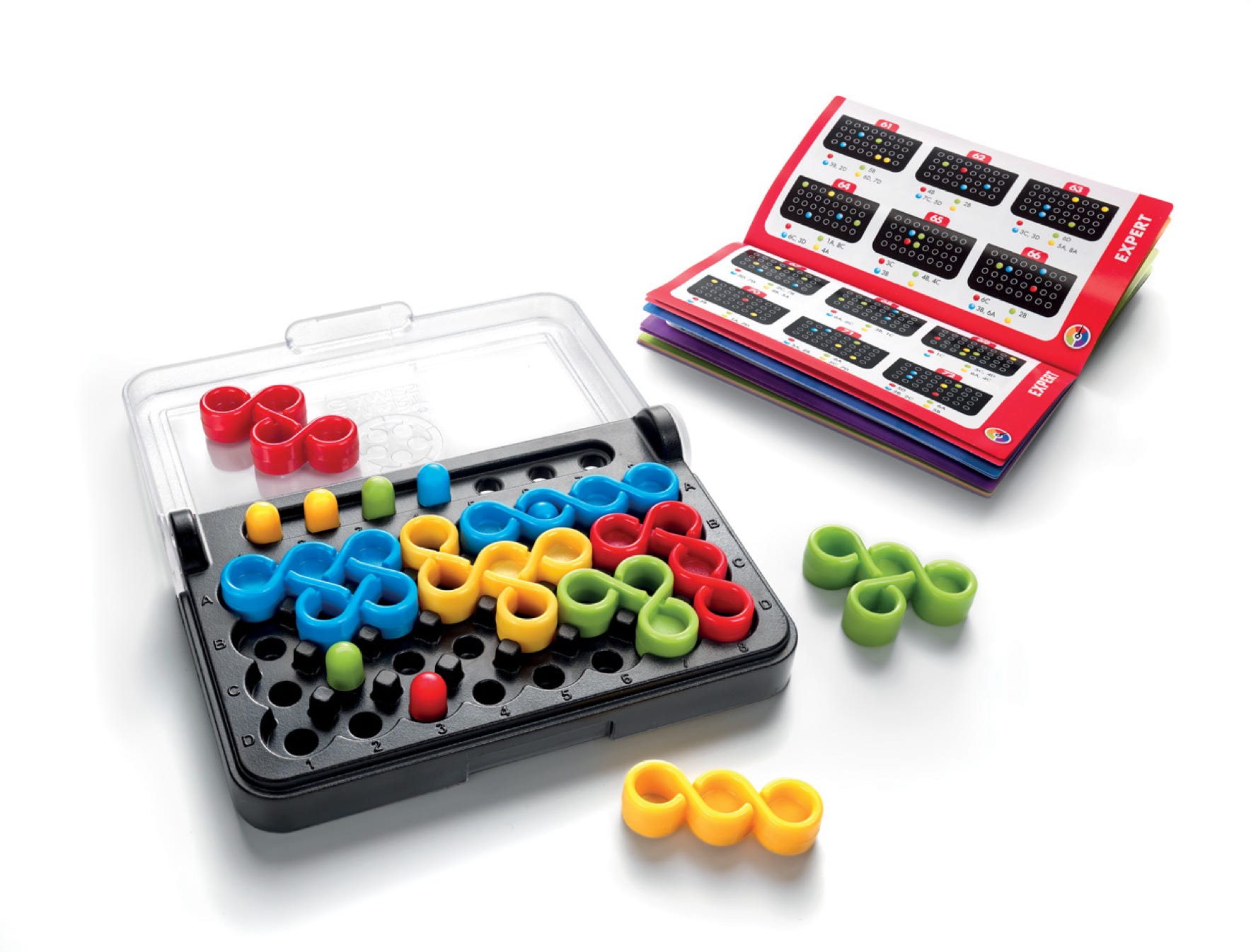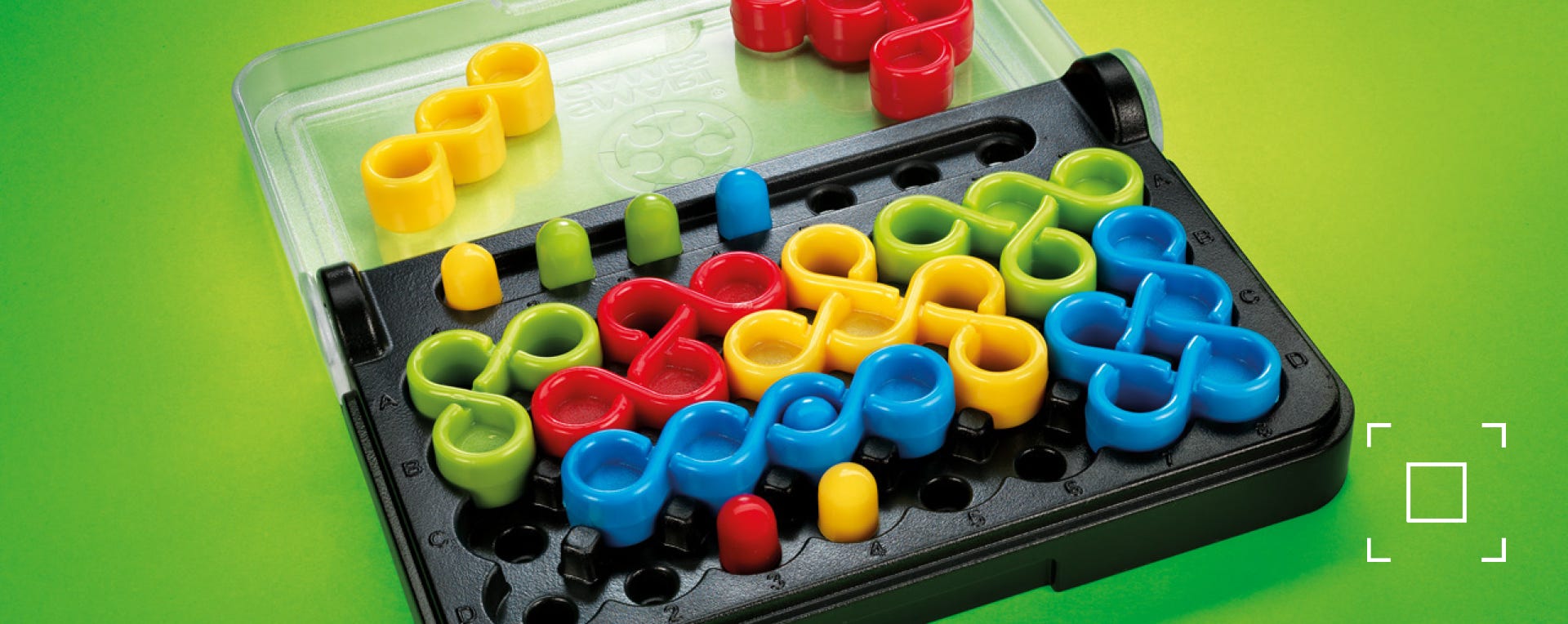
IQ-Twist
The story behind the creation of IQ-Twist
Raf Peeters, January 2011
There are a many packing puzzles, however IQ-Twist is the first one to use pegs in order to force specific placements of the pieces. This adds a layer of complexity not seen in most other packing puzzles.
In most games like this different challenges are made possible by starting with a few puzzle pieces already on the game board (for example the puzzles of Lonpos) or by adjusting the size of the game board itself (like Katamino). I gave it a different twist in my concept for SmartGames. As you can read elsewhere on my website, designing games is the real puzzle for me. Although I like the final product, the development of it drove me nuts and ever since I have to live with a twisted brain ;-)
OBJECT OF THE GAME
In every challenge a few colored pegs are placed on the game board. The object of the game is to place all puzzle pieces on the game board. But because of the pegs, this is only possible when there is a hole inside the puzzle piece you want to place on that exact position. And what’s more, you can only do that when the puzzle piece and the peg have the same color.
THE CHALLENGES
You can use the playing pieces in any orientation, which means that that most puzzle pieces can be placed in 8 different ways (except the symmetrical ones). But there are 32 places on the game board, so the number of possibilities is often quite high. The fact that there are always two pieces with the same color, makes it extra hard to determine which puzzle piece needs to fit on a specific peg. And of course most challenges only show a few pegs, so you still need to find the right place for the other puzzle pieces. Challenges with fewer pegs are in most cases harder to solve, although the position of the pegs has often a bigger impact on the difficulty level than the number of pegs.
HINT: START WITH THE MOST DIFFICULT PUZZLE PIECE
All challenges have just one solution that is shown at the end of the challenge booklet. This is different from the other brainteasers in this collection like IQ-puzzler (not the Pro version), IQ-cabin and IQ-splash (3 games which were not invented by me but by Lonpos). These don’t include any solutions because they have multiple solutions for each challenge. IQ-Twist doesn’t have any 3D-challenges, but the MASTER and WIZARD levels are harder than the 2D-challenges in IQ-puzzler and IQ-cabin.
The puzzle pieces can be very confusing in the beginning, because they are formed by circles with connections angled 45°. But the grid is just an orthogonal one (90°). Because of this a lot of people try to place the pieces in the wrong orientation, especially the bigger yellow piece. This has a strange shape, so most people keep it until last. You better do the opposite, because often this big yellow piece only fits on a few places.
COMPACT TRAVEL GAME
Because of the pegs, you can keep on playing until you found the solution, without the need to look at the challenge booklet every time you want to start over. You might not need all the pegs in every challenge. To make sure you don’t lose any, you can store the ones you don’t need in the peg storage row at the top of your game board. The booklet has 100 challenges and can also be stored inside the game underneath the transparent lid. The front side of the booklet shows a way how to place all puzzle pieces back on the game board, so that you can quickly pack everything inside, when you stop playing and want to take the game with you.
UPDATE
To make the number of challenges consistent with all the other more recent IQ-games, it now includes 120 challenges instead of 100.


example of a challenge and solution of IQ-Twist
Website ©2011 Raf Peeters
Products and images: © Smart
